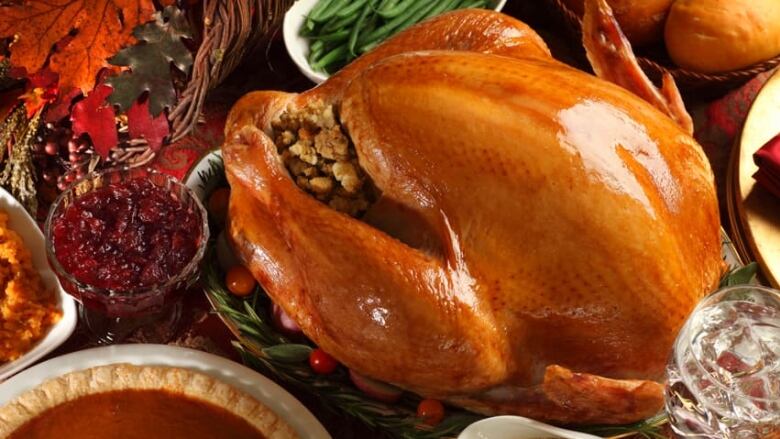5 tips for cooking turkey this Thanksgiving
Food columnist Mike Green shares time-tested tricks to getting the most out of that big bird

Whether you're a Thanksgiving veteran in the kitchen or trying your hand at cooking a turkey for the first time this year, CBC News food columnist Mike Green has some tips to help keep your bird and gravy game on track.
1) Turkey should be at least 8 pounds
Even if you don't belong to a massive family, Green suggests buying a bird that weighs between eight and 12 pounds. Why? So that there are more than just scraps leftover for the next few days of meals.
A turkey in that size range should be enough for a group of six or eight people, Green says.
Families of 20 or more might want to consider cooking two birds or a "20-pounder," Green adds.
2) You gotta brine it
"Brining was very big eight to 10 years ago. You don't hear much of it now, but I still think that's the way to do it."
Green recommends Googling"Thomas Kellerchicken brine" for the bestcitrusy, herbaceous brine recipes.
He adds that the turkey should be soaked in the salty brine, and left in the fridge or in ice in a big cooler for eight hours overnight for the best results.
"But you don't want to over-brine, because that thing is going to be saltier than that Thanksgiving where your grandpa drank too much wine before dinner and he had an airing of grievances instead of a giving thanks," Green says.
Before throwing it in the oven, Green says you have to dry it out.
"Put it up on the counter, maybe pat it down with some paper towels and leave it. You pretty much want it to go to room temperature before you roast that bird."
3) Keep the heat around 325 F
While Green says that mark is generally a good level to keep the heat at, no two birds are the same.
Green adds that it takes a little math to calculate exactly the right temperature based on the size of the turkey.
"I find that if you start it high and go low, you're going to get these hot spots on the breast," Green said.
4) Apple and sage are a bird's best friend
Green likes to put apple, onion, celery, heritage carrots and lots of sage into his stuffing.
He suggests stuffing the turkey "just a bit on the bottom" of the roaster, and prepping the rest of the tasty side dish on its own.
Green says to make a thin bed of the mix to go underneath the turkey. Steam from the veggie and fruit mix will get sucked up into the meat, all the while protecting the bottom of the bird from burning, Green says.
"The best part (are) those carrots afterwards, you can serve them and they're like confit carrots," Green says. "All the fat from the bird is going to drip down and cook those carrots."
5) Gravy, gravy, gravy
"It's the most important part," Green says.
Green recommends taking out and mashing what's left of the onion, celery and apples from the bottom of the roaster. Then, put all that mashed business into some cheesecloth and squeeze the juices into a pan.
Take the fat, juice and some flour, and put them on the boiler to make a roux, Green says.
Bonus tips:
Don't bother with basting, Green says.
"What I do is make a sage or herb butter ... and then just rub the bird in that."
Also, if you have any Instagram-crazed foodies in the family, cook the turkey breasts up, Green says.
The turkey is going to taste great either way, but "you're probably going to want to Instagram that turkey these days," so placing it breast up is better for photos, Green says.












_(720p).jpg)


 OFFICIAL HD MUSIC VIDEO.jpg)
.jpg)



























































































